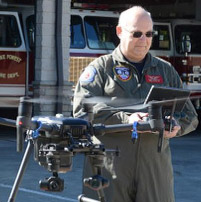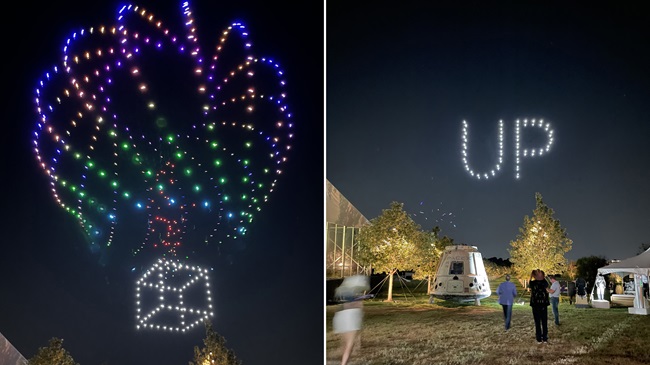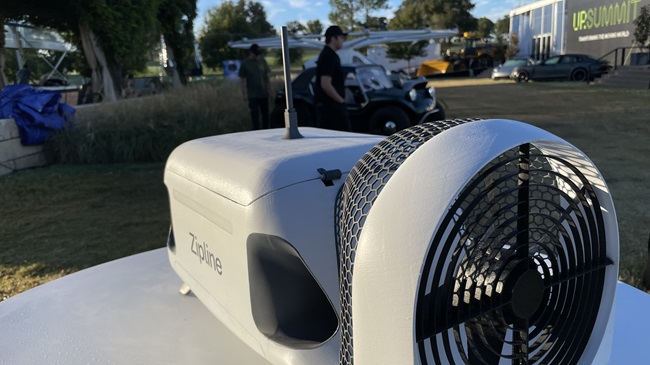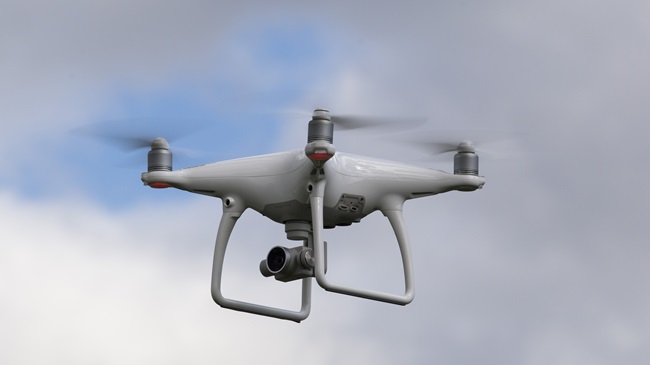Drone search-and-rescue study reveals potential, limits
A new study on the effectiveness of drones in finding lost individuals demonstrates drones can be an excellent tool, but a drone alone is no guarantee of a successful outcome.
The study on the effectiveness of drones in search-and-rescue (SAR) operations involved a series of simulated scenarios in Ireland and Wales, with drone-equipped teams searching for simulated victims alongside ground-only teams. They found that while drones could find victims about three minutes faster, the overall success rates were similar. The study, conducted by DJI, the European Emergency Number Association, and Black Channel, was presented at a recent conference and posted online.
Most of the SAR missions I've flown have had a limited chance of success. It is a frustrating experience for me as the pilot and for the first responders who hope the drone will magically find the missing person.
Recently I was called to help locate a man ten hours after he went missing. (The call didn't come in until 11 p.m.) I've also flown SAR missions where the push was to get in the air fast, before enough data was gathered to make good mission planning decisions to utilize the drone most effectively. The good news is the DJI/EENA/Black Channel study just released provides exceptional information and lessons learned that all public safety pilots can use to support mission planning decisions.
The drones of today are great tools to accomplish missions; however, they can't generally fly for hours to wander around the area and stumble on a missing person. But times are changing.
I can see a time in the future when we will be able to launch a small swarm of autonomous drones to cover a geofenced area and fly to locate likely missing person targets. Until that day comes, the use of drones to successfully find a missing person is often more luck than skill.
Successful use of a drone as a SAR tool relies more on training and procedures than on any particular type of aircraft or payload. A successful SAR flight begins with actionable intelligence on the missing person, including their last known location and personal habits; a well-trained team; a strong incident command presence; and the optimal terrain, environment, and weather. For example, a thermal camera on a hot day is often not the right payload to fly. You would be amazed at how many hot things there are in the woods on a warm sunny day.
The Drone Efficacy Study found that in trials, the team with the drone found the missing subject about three minutes faster than the team without a drone. But the SAR teams without drones found the missing target slightly more often than the drone-equipped team.
My experience has shown the time savings delivered by the drone in a SAR operation can be much more significant when faced with challenging geographic conditions. However, the flip side is correct as well. In a densely forested area, the best drone in the world can have a difficult to impossible time locating a missing person with either a visual or thermal camera. A dense tree or vegetative canopy can make it almost impossible to see the ground.
We are living in the very earliest days of drones playing a role in SAR functions. My field experience aligns closely with the final recommendations of the Drone Efficacy Study that identified specialized training and skills development as critical to success.
There is a chronic misconception that merely putting the drone in the air will lead to a fast and positive outcome. That is a giant leap of faith and not a finding supported by the facts. It doesn't matter what make and model drone a SAR team flies, and the aircraft alone is not a predictor of success. The real keys to a successful SAR drone flight are specialized pilot training, and selecting the best combination of aircraft, payload, technology, and tactics.
The study is indeed worth reading if you are interested in SAR drone utilization. The information and experiences shared will help to reinforce the approach public safety pilots are taking in the field.
For example, pilots and drone operations need to become skilled and adept at interpreting data and deciphering the information being gathered. While public safety teams have the drone in the air, what is happening on the ground may be equally important if the actionable data is not arriving in the right hands at the right time. That comes down to a solid incident command structure.
Today, public safety drone pilots may find themselves called into a multiagency incident where a lack of organization and team effort prevails. Trust me; I've flown in enough such situations that sometimes the best use of the drone is to keep it on the ground until a solid mission plan and operational structure are in place. There is no need to waste flight time if it has a low chance of being successful.
Key findings from the study included:
- Planning and developing a search strategy before executing the flight is essential.
- Drone teams can take longer to prepare and execute many parts of the SAR mission.
- Success was less dependent on previous team familiarization and more likely when ad hoc flight team members had standardized training.
- Search crews wanted more information about the missing person, including more backstory and victim familiarization, to help guide their flight operations and strategy.
I can safely say that as of now, there is no magic drone on the market that leads to SAR success. My mission experience, as the study presents, has found that factors like an abundance of false-positive targets generated from the drone, difficult battery energy management, harsh operating conditions for humans, and a disorganized incident command structure can lead to less-than-optimal outcomes.
On each SAR alert call I am dispatched on I find myself always wishing the same thing on the way to the scene: Just once I'd love my target to be lost in an open field and wearing bright clothing. They never are. All flights are challenging.
Drones are a great tool, but we public safety pilots can't save lives alone. Teamwork and training matter.




